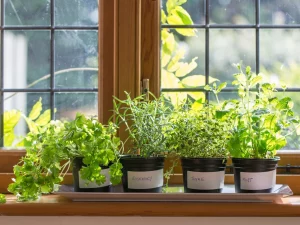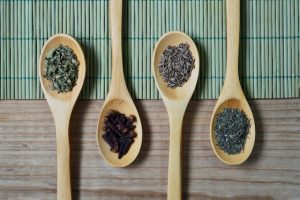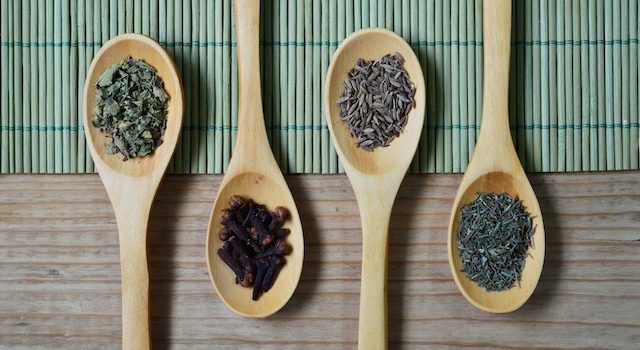
The use of herbs as remedies for various ailments and health conditions has a long history, dating back to ancient civilizations. In traditional and alternative medicine practices, both fresh and dried herbs play essential roles, each offering unique benefits and applications in natural healing. In this article, we’ll explore the use of both fresh and dried herbs in traditional and alternative medicine, shedding light on their respective advantages and how they contribute to the art of natural healing.
The Rich Tradition of Herbal Remedies
Herbal remedies are deeply rooted in traditional medicine practices across cultures worldwide. The choice of fresh or dried herbs depends on various factors, including availability, seasonality, and the specific medicinal properties of the herb.
Fresh Herbs:
- Immediate Potency: Fresh herbs are often used when the immediate potency of the herb is required. For example, freshly crushed garlic is employed as a remedy for colds and infections because it contains active compounds with antimicrobial properties.

Image by: https://www.gardeningknowhow.com/edible/herbs/hgen/growing-herbs-indoors.htm - External Applications: Fresh herbs are favored for external applications, such as poultices or topical remedies. Comfrey leaves, for instance, are used fresh in poultices to promote wound healing and reduce inflammation.
- Culinary and Medicinal Overlap: Many culinary herbs, such as ginger, turmeric, and basil, are valued in traditional medicine for their medicinal properties. In these cases, the use of fresh herbs in cooking can contribute to overall health.
Dried Herbs:
- Extended Shelf Life: Drying herbs is an effective method of preserving them for extended periods. This is especially valuable for herbs with short growing seasons or those that are needed year-round.
- Concentrated Medicinal Properties: Dried herbs often have concentrated medicinal properties. For instance, dried peppermint leaves are used to make infusions that can aid in digestion and alleviate headaches.
- Teas and Infusions: Dried herbs are commonly used to prepare teas and infusions, allowing for a convenient and easily customizable method of herbal remedy delivery.
Herbal Remedies in Different Traditions
Herbal remedies vary from one tradition to another, and the choice between fresh and dried herbs depends on the specific practices within these traditions.
Ayurveda:
In Ayurveda, an ancient Indian system of medicine, both fresh and dried herbs are utilized. Fresh herbs are used in various forms, including fresh juices and pastes. Dried herbs are employed in herbal powders, teas, and tinctures.
Traditional Chinese Medicine (TCM):
TCM incorporates the use of both fresh and dried herbs. Fresh herbs are often prepared as soups, broths, or tonics. Dried herbs, on the other hand, are frequently used to create complex formulas that address specific health concerns.
Western Herbalism:
Western herbalism encompasses a broad range of practices, and the use of fresh or dried herbs varies. Tinctures, which involve extracting active compounds from dried herbs using alcohol or glycerin, are a common practice in Western herbalism. However, fresh herbs are also valued for their immediate effects and are used in various preparations.
The Advantages of Fresh Herbs
Fresh herbs offer certain advantages in herbal remedies:
- Immediate Potency: Fresh herbs contain active compounds in their most potent form and can be especially effective in acute situations.
- Low Processing: The minimal processing of fresh herbs preserves their integrity and immediate medicinal properties.
- Gentle Remedies: Fresh herbs are often used for gentle remedies that promote overall health and well-being.
- Easily Accessible: Fresh herbs can often be found in gardens, windowsill planters, or local markets.
The Advantages of Dried Herbs
Dried herbs also have their own set of advantages:
- Long Shelf Life: Dried herbs can be stored for extended periods, allowing for year-round access to their medicinal properties.
- Concentrated Medicinal Properties: Drying herbs can result in concentrated medicinal properties, making them effective in specific remedies.
- Customizable Formulations: Dried herbs can be easily combined to create customized herbal formulations, such as teas, infusions, or tinctures.
- Transportability: Dried herbs are portable and can be easily stored and transported, making them practical for various applications.
Balancing Fresh and Dried Herbs in Herbal Remedies
The art of herbal healing often involves balancing the use of both fresh and dried herbs, allowing practitioners to harness the benefits of each. Here’s how to achieve that balance:
- Consider the ailment: The choice between fresh and dried herbs should be guided by the specific ailment or health concern. Acute issues may benefit from the immediate potency of fresh herbs, while chronic conditions might require the extended shelf life of dried herbs.
- Formulation: Depending on the herbal remedy, combine fresh and dried herbs to create a well-rounded formulation. For example, a tincture can include dried herbs for potency and a touch of fresh herbs for immediate impact.
- Personalize remedies: Herbalists often personalize remedies to suit individual needs. A skilled herbalist will consider factors like the individual’s constitution, the season, and the specific ailment when selecting herbs.
- Culinary herbs: Incorporate culinary herbs into your diet to enhance overall health. Fresh herbs used in cooking can provide a steady source of medicinal properties in your daily meals.

Photo by Miguel Á. Padriñán: https://www.pexels.com/photo/brown-wooden-spoon-with-herbs-on-top-of-green-bamboo-mat-and-brown-wooden-surface-130980/
In Conclusion
The choice between fresh and dried herbs in traditional and alternative medicine is guided by the nature of the ailment, the traditions being practiced, and the preferences of herbalists and individuals seeking natural remedies. Both forms of herbs have their own unique advantages, and the art of herbal healing lies in the skilled selection and combination of fresh and dried herbs to create effective, holistic, and personalized remedies. Whether you’re turning to Ayurveda, TCM, or Western herbalism, the use of both fresh and dried herbs in herbal remedies showcases the rich diversity and adaptability of herbal traditions that have been handed down through generations.










